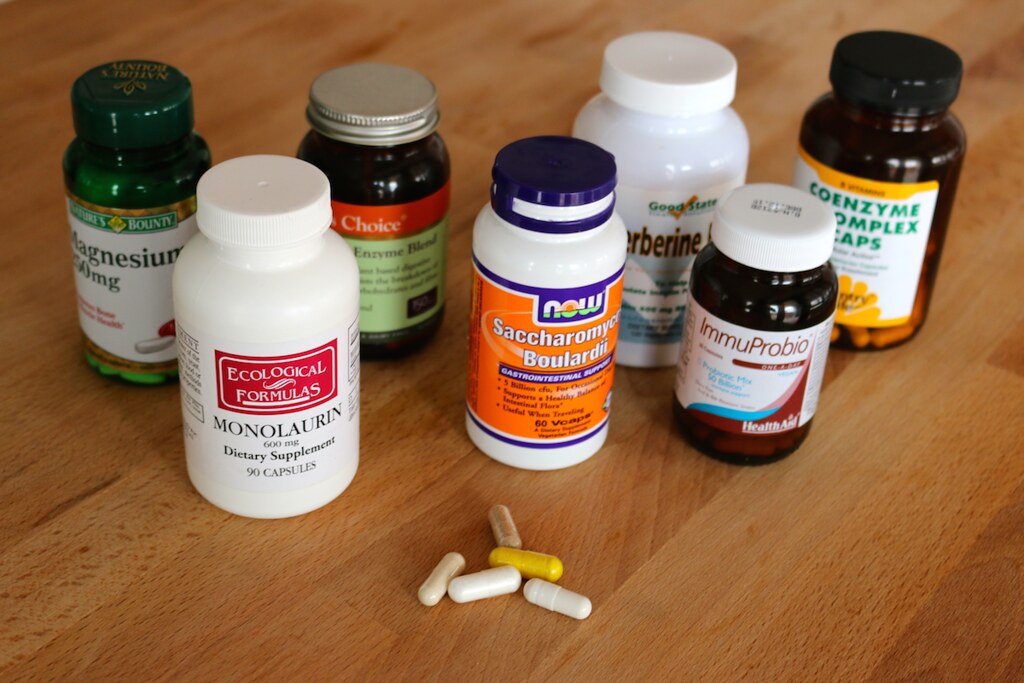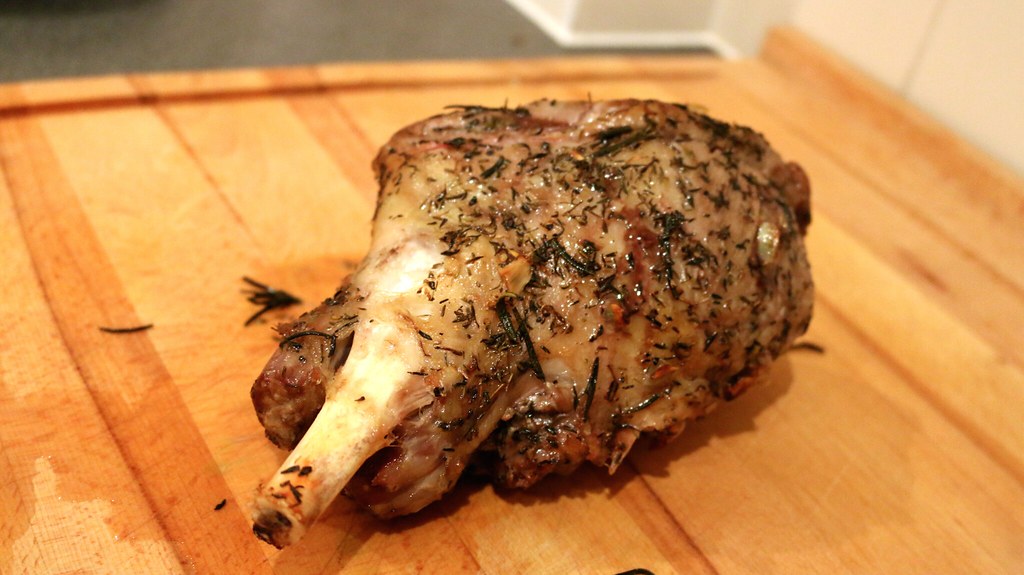Dealing with GERD, and Embracing the Clean Gut Diet
By Ryan Snyder, 5 April 2014
I've been dealing with stomach issues for the past 7 months. I'll spare you the not-so-fun details, but essentially I was experiencing food-based triggers, where after consuming certain foods and beverages (namely spicy foods, coffee, alcohol, and highly acidic foods such as tomato sauce) my body would begin sweating, shaking and trembling, I'd have trouble breathing, and my stomach would constrict to the point where I could only eat half of a meal. The gastroenterologist diagnosed me with gastroesophageal reflux disease (GERD) and mild cases of both a hiatal hernia and Barrett's esophagus.
This all came as a shock to me. Although I run a Meat Club, I still eat a balanced diet full of veggies and exercise regularly. Admittedly, I've relied way too much on coffee and alcohol throughout my tech career to cope with work-induced sleep deprivation and stress, and consuming Ibuprofen for headaches after staring at the computer screen too long was probably a bad idea too.
The gastroenterologist prescribed Omeprazole, which I took long enough to quell my stomach so that I could begin eating full meals again. But I'm not the kind of person who likes to take medication to heal symptoms, especially not when that medication has well-documented side effects. So, I began researching dietary programs that had a focus on naturally healing the stomach and gut.
In late February I started the Clean Gut Diet, based on the book by Alejandro Junger, in order to clean out my innards and reintroduce probiotic bacteria into my stomach and intestines. The gist of the diet is this — For 3 weeks you'll eliminate all caffeine, sugar, alcohol, dairy, and gluten from your diet, start each day with a fruit and veggie smoothie, eat 80% vegetables and 20% meat or legume protein for lunch and dinner, and consume a number of probiotic, vitamin, and health supplements with your meals. For the 4th week, you'll gradually reintroduce gluten and dairy into your diet.
Over the course of 3 weeks, I consumed 4 gallons of coconut water, cooked or juiced 12 pounds of carrots, and tossed or blended 8 pounds of greens. I lost 7.8 pounds, even though losing weight was not a goal for this diet. Afterwards I felt tremendously better. I hadn't experienced a food-based trigger since starting the diet, and the other issues that I'd been experiencing, such as feeling cloudy-headed, lethargic, and on the verge of illness at all times, had mostly disappeared. I still had and continue to have some stomach pain, but it is finally at a tolerable level.
I don't consider myself to be fully healed, and I know that I'll need to begin a life-long routine of taking better care of myself. I'll continue to run Meat Club — because if you're going to eat meat, it should be sourced from farmers who raise their animals right and it should taste awesome. But I'll be cutting back my coffee and alcohol intake significantly, increasing my exercise routines, eliminating stress, and making sure I get the right amount of sleep every night (I've promised myself I would lose zero hours of sleep over my job this year). The Clean Gut Diet was a great way to kickstart this healthy routine.
I won't lie — the diet wasn't easy. While on the diet I didn't feel like I could live my normal life. I couldn't continue eating out 8 times per week turned, and instead ate out only once per week, because I really don't know what ingredients some restaurants put in my foods, and I had to research healthy dining establishments the day before to know my dietary needs would be met. And I couldn't meet up with my workmates at the pub, to down a couple Guinness' while talking through work issues.
Negatives aside, I'm still glad I followed this diet. Below are the tips and recipes I collected over that 3 week period, in the hopes that maybe it will help others who make it through the Clean Gut diet. Best of luck to ya, and give me a shout on Twitter at @ryansnyder if you have any questions or comments!
Get Prepared
First, buy the Clean Gut book.
Next, you'll need to order the following supplements before you begin:
- Berberine HCL
- Saccharomyces boulardii
- Multiple-strain probiotic
- Magnesium
- Multiple digestive enzymes
- Monoluarin
- B vitamin complex
I also picked up a few extra ingredients to add to the breakfast smoothies:
Finally, you'll want to start getting your body ready for the diet. Ween yourself off coffee 2 weeks prior to the diet, and alcohol 1 week prior to starting the diet. It will help to prevent your body from going into complete shock on day 1 of the diet.
Equipment
With as many greens as you'll be going through, you'll want a salad spinner to quickly wash and dry your greens. I use the OXO Salad Spinner.
For smoothies, I use the Kenwood FP-920 Blender / Food Processor to blend the smoothies every morning, but any blender will do. And I use the Hurom Juicer to juice carrots for a few of these smoothies.
Create a New Daily Routine
As with any diet, it's not just about changing the food you eat, but also changing your daily habits:
- Keep a daily food journal, and log other things too, like how you feel after your meal, your mood, your stomach pain, and your poo. It will help you identify any food-related triggers you might have, especially in the 4th week when you begin reintroducing foods into your diet.
- Record your weight each morning before you eat.
- Drink all 8 glasses of water every day.
- Spend some time each night researching and prepping recipes for tomorrow's meals.
- Pack your lunch to take to work the night before.
- Go to bed early, and get your full 8 hours of sleep.
Prep Everything You Can in Advance
We all have busy weeks, so take advantage of one of your weekend days to prep your meals and snacks for the week. Visit the farmers market, buy a ton of organic veggies, and block out the following 4 hours for cooking. Here's what I cooked up each of the 3 weekends:
- Cut up a whole chicken into parts.
- Use the chicken carcass to make a batch of chicken stock to use as a soup base. Occasionally, I prep a batch of vegetable stock instead.
- Season the chicken parts with salt and pepper, and sauté in olive oil over medium heat until brown on each side. Add 1 cup chicken broth in the final 10 minutes to keep it moist. Slice the breasts for a chicken salad, and dice the leg meat to use in a chicken soup.
- Prep hard-boiled eggs for meal ingredients or snacking.
- Roast vegetables ahead of time to have at the ready for meals or for snacking. I roasted carrots, parsnips, cauliflower, butternut squash, and jerusalem artichokes.
- Bang out a homemade mayonnaise to use to make a chicken salad or the salmon salad recipe in the book.
- Make a mustard vinaigrette for your salads.
- Prepare a homemade soup for the week.
- Wash and dry spinach and salad greens.
Breakfast Smoothies
You gotta start your mornings right, and I wouldn't normally call downing a green smoothie every morning my ideal way to start my day. The smoothie recipes in the Clean Gut book ranged from meh to blech. The primary issue is that you're only allowed to eat a handful of fruits in this diet — avocados, berries, and coconuts. And then you're expected to make smoothies, but everyone knows that you can only really call it a smoothie if it contains a banana.
After I started the diet, I began working on some of the recipes so that I could start drinking smoothies that didn't suck. Now, even after the diet I'm drinking green smoothies almost every day. Here are 5 recipes that will help you make it through those 3 weeks:
Soups
You'll want to make sure you have a batch or 2 of soup in your fridge at all times. They're great for a quick meal, but more importantly for your packed lunch that you'll take with you to work.
- Butternut Squash Soup
- Ginger and Lentil Soup
- Chicken Garden Soup (replace butter with olive oil)
- Creamy Red Lentil and Kale Soup
- Tom Kha Ghai
Meals
The meals provided in the Clean Gut diet book aren't terrible, but I have an inherent distrust of any book that contains recipes with "cheese" in the title, when there's no actual cheese in the recipe. Give the Salmon Salad, Curried Duck, Slow-Cooked Chicken Thighs, Garlic-Lemon Chicken, and Lamb Chops recipes from the book a try. Here are some other recipes to add to your evening meal:
- Thomas Keller's Simple Roast Chicken
- Roast Leg of Lamb
- Chicken Salad in Alice Water's Art of Simple Food
- Chicken Curry
- Herbed Quinoa





